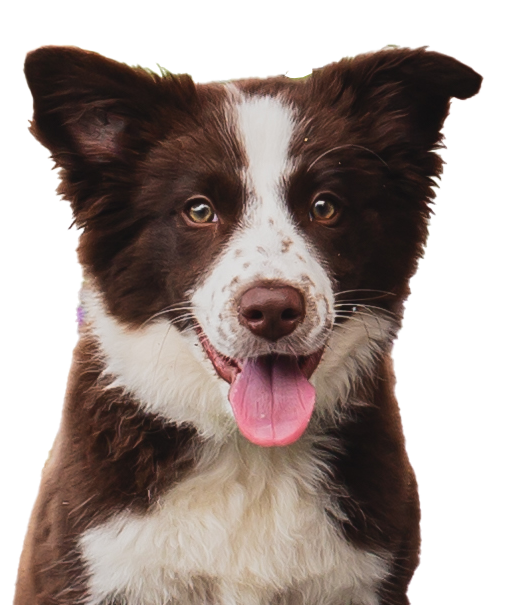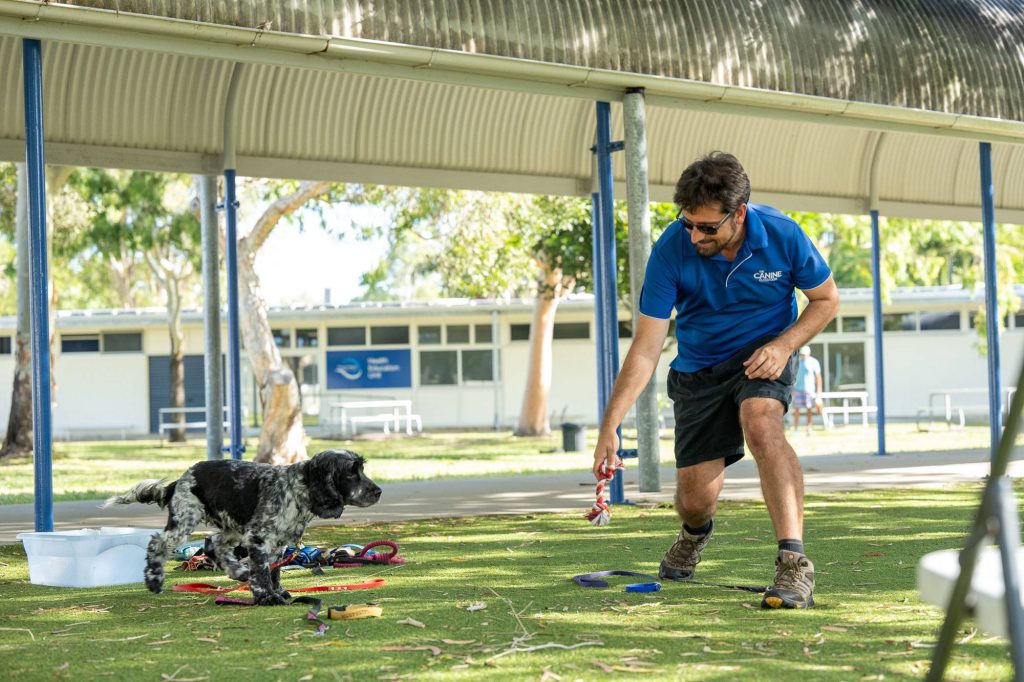Any pet parent knows that barking is a natural way for a dog to communicate, but when it becomes constant, piercing, or disruptive, it can be exhausting for both you and your furry companion. From early morning yaps to late-night bark sessions that wake the whole street, dealing with a barking problem is something many pet owners face. The good news? With understanding, patience, and a few practical strategies, you can help your pup find their calm and reduce excessive noise in your home.
Understanding Why Excessive Barking Occurs
Before you can stop dog barking, it’s important to understand why your dog is barking in the first place. Dogs are social animals, naturally wired to alert, communicate, and interact. Their vocalisations can stem from a variety of causes:
- Alert barking: warning of a perceived threat, whether it’s a passing stranger, a noisy cat, or an unfamiliar noise outside. Some dogs can have niche or unique triggers you may not be able to identify at first.
- Attention-seeking: your dog is barking to engage you or other humans in the household.
- Boredom or lack of stimulation: if left alone for long periods, some dogs turn to excessive barking as a way to release pent-up energy.
- Anxiety or fear: separation anxiety and fearful behaviour can trigger constant yapping or howling.
Understanding the root cause of your dog’s behaviour is the first step toward a calmer household. After all, they’re not just doing it to be a nuisance because there’s usually something they’re trying to communicate.
Common Triggers In Queensland Homes
Many of our clients wonder how to stop your dog barking in Queensland’s urban and suburban environments. These spaces can present unique triggers that make dogs vocal. Neighbours walking past, possums or magpies near windows, kids playing in the backyard, other dogs, traffic sounds, and construction noise can set off a chain reaction. Dogs are keenly aware of sound, and those sudden, high-pitched noises often prompt barking. Recognising your dog’s triggers can help you manage the situation proactively.
Training Basics To Reduce Barking
Solid training is your strongest tool to curb a dog’s barking through relying on positive reinforcement methods. We always prioritise positive reinforcement, which teaches your dog that calm alternative behaviour earns rewards and attention. Here’s a framework to start:
Teach the “quiet” command
Begin by waiting until your dog is calm, still, and quiet for 5 seconds after barking. Steadily and firmly say “quiet”, then, offer treats and praise. Wait a moment before offering this treat to ensure your dog is not being rewarded for the barking, but the silence. Repeat consistently, using eye contact and a calm voice to reinforce the behaviour.
Use gentle deterrents when needed
If barking continues, pair the “quiet” command with a gentle aversive to discourage the unwanted behaviour. This can include a firm verbal cue or, for some dogs, something like a light mist from a spray bottle filled with water (make sure your dog dislikes the spray, some may find it fun instead!). The goal is to interrupt the barking so they learn that ignoring the “quiet” cue leads to something unpleasant, while listening earns praise and rewards.
Gradually increase distractions
Once your dog responds at home, gradually extend the challenge by introducing mild noise or external stimuli. Reward calm behaviour, even if it only lasts several seconds at first.
Alternative activities
Encourage mental stimulation and exercise to redirect energy. Toys, puzzle feeders, and short walks can significantly reduce barking caused by boredom.
It takes practice, but teaching calm behaviour helps both you and your furry friend enjoy a more relaxed environment.
Puppies Vs Adult Dogs
While the principles of training remain similar, puppies and adult dogs may require slightly different approaches.
Puppies Learning Boundaries / Left Alone
Young pups are still developing their communication habits. Their yaps often come from curiosity, excitement, loneliness, or overstimulation. Tips for puppies include:
- Frequent, short training sessions
- Supervised play with other dogs or safe exposure to household noise
- Early socialisation to reduce future fear-based barking. Desensitising your pup at a young age can be crucial
- Toys, puzzles, games, TV or radio left on for sound
- Following through with training as soon as they start barking in excess
Adult Dogs With Long-Term Habits
Things are a little different for older dogs with set habits. Older dogs may have entrenched barking patterns that need patience to modify. Professional dog trainer guidance can be useful here, alongside consistent training, mental stimulation, and clear expectations. Remember: an old dog can always learn new tricks, but it often takes commitment and consistency!
Managing Barking While You’re Out
We’re often asked ‘why does my dog bark when I leave?’ Many dogs prefer company and activity, and barking can spike when left alone. After all, your dog loves you so much, it can be hard to be left alone! Even a dog who’s physically exercised might bark if bored or anxious. Tools and strategies to support your pup include:
- Crate training for a calming effect through routine
- Using a doggy door to access a safe, outdoor area
- Providing engaging toys or puzzle feeders
- Background sound like soft music or a radio
For owners struggling with constant barking, professional daycare can be a game-changer. Sending your furry friend to a supervised, engaging environment helps them burn energy, learn social cues, and enjoy mental stimulation, often assisting in reducing barking at home.
Tools That Can Help Stop Barking
Some dogs respond well to management tools, but these should always be used carefully:
- Leash guidance or gentle restraint can prevent reinforcing reactive barking during introductions to other dogs or new environments.
- In some cases, a vet may recommend medication to help manage anxiety or stress-related barking. These should always be used under professional guidance and alongside training, enrichment, and behavioural support.
- While anti bark collars like citronella collars or those that make ultrasonic noise are marketed as humane quick fixes, they tend to offer only temporary results and may increase stress or confusion over time. We recommend avoiding their use and instead investing in training methods that teach your dog calm, lasting behaviour.
Always consult a trainer about your dog’s behaviour before using new tools, as they will be able to ensure the best course of action for your pet.
Practical Tips For Everyday Life
To help your dog stay calm and reduce barking, consider these everyday strategies:
- Maintain consistent daily routines, including feeding food at similar times, regular walks, stimulation, and exercise
- Reward your dog’s behaviour when calm, incorporate mild deterrents where needed like punishing with a spray bottle
- Encourage short periods of independence at home to ease separation anxiety
- Avoid excessively yelling at your dog to stop barking, as it often reinforces the behaviour
Incorporating these habits gradually leads to long-term improvements in well-being, physical health, and overall household harmony.
When To Seek Professional Help With Barking & Separation Anxiety
Sometimes, barking is tied to health issues, cognitive behaviour, fear, or deeper anxiety patterns. Signs you might need professional help include:
- Dog barks excessively despite consistent training, even to the point where they may injure themselves
- Barking accompanied by pain or aggression
- Constant alarm or fear responses
- Redirected aggression at you, the owner
A professional dog trainer can assess your dog, identify the root cause, and implement a plan tailored to your dog’s personality and lifestyle. Most dogs respond positively to guided training and structured routines.
Why Doggy Daycare Can Help
For dogs who bark out of boredom, lack of socialisation, or anxiety, our Brisbane doggy daycare can make a huge difference. Our team provides supervised play, mental stimulation, and safe interactions with multiple dogs, helping pups burn off energy and learn social cues. This structure often reduces excessive barking at home while you’re at work or away for long periods. Once they get home from their day out, they’re often too tired to even have a yap.
Doggy daycare is about managing barking by keeping your dog busy and, most importantly, it’s about improving your dog’s confidence, habits, and well-being. By sending your dog to a safe, engaging environment, you’re giving them an outlet for energy and attention, which leads to a happier pet and a quieter house. At daycare, we also provide crate training for all dogs to help manage energy and arousal effectively. This consistency makes it easier for you to continue crate training at home, reducing barking linked to separation anxiety.
Signs Your Dog Might Benefit From Daycare
Here are some clues that your dog is barking for more than just attention:
- Barking spikes when you’re left alone
- Other signs of anxiety, like pacing or chewing furniture
- Restless energy that isn’t tired out by regular walks
Daycare provides structured exercise, enrichment activities, and socialisation with other dogs, giving your pup an outlet to stay calm and satisfied.
Get Support From The Canine Classroom
Deciphering how to stop a dog barking can feel overwhelming, but it’s a natural part of being a dog. With patience, training, proper tools, and understanding your dog’s behaviour, you can reduce stress for everyone in the household. We offer in-depth dog training and behaviour consults that teach these vital consistency and rules.
For owners in South East Queensland, The Canine Classroom offers doggy daycare that combines play, socialisation, and structured activities to keep your pup happy, calm, and engaged while you’re away. If your dog barks out of boredom or separation anxiety, sending them to a supervised, enriching environment can be the key to a quieter house and a happier furry friend




